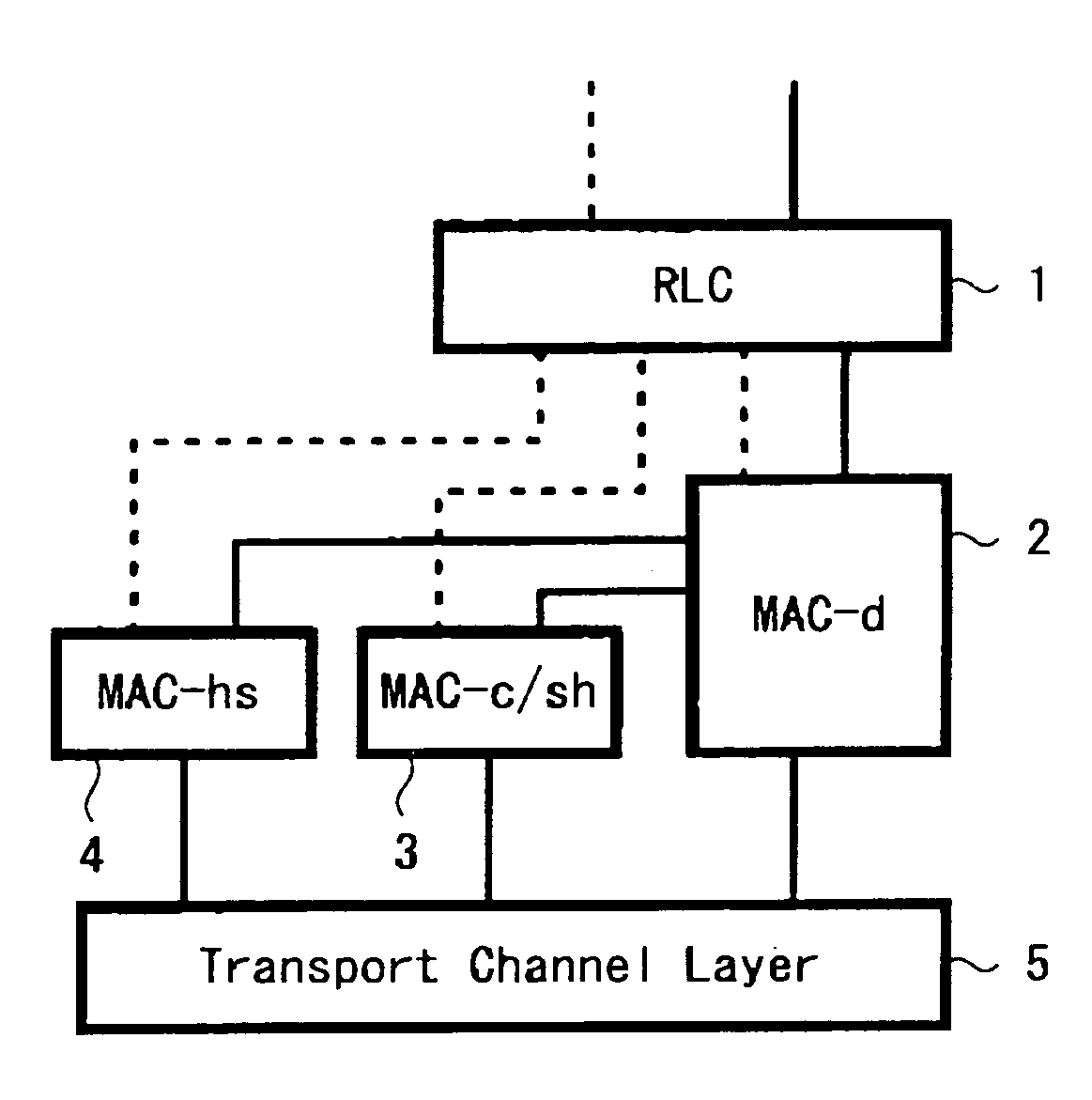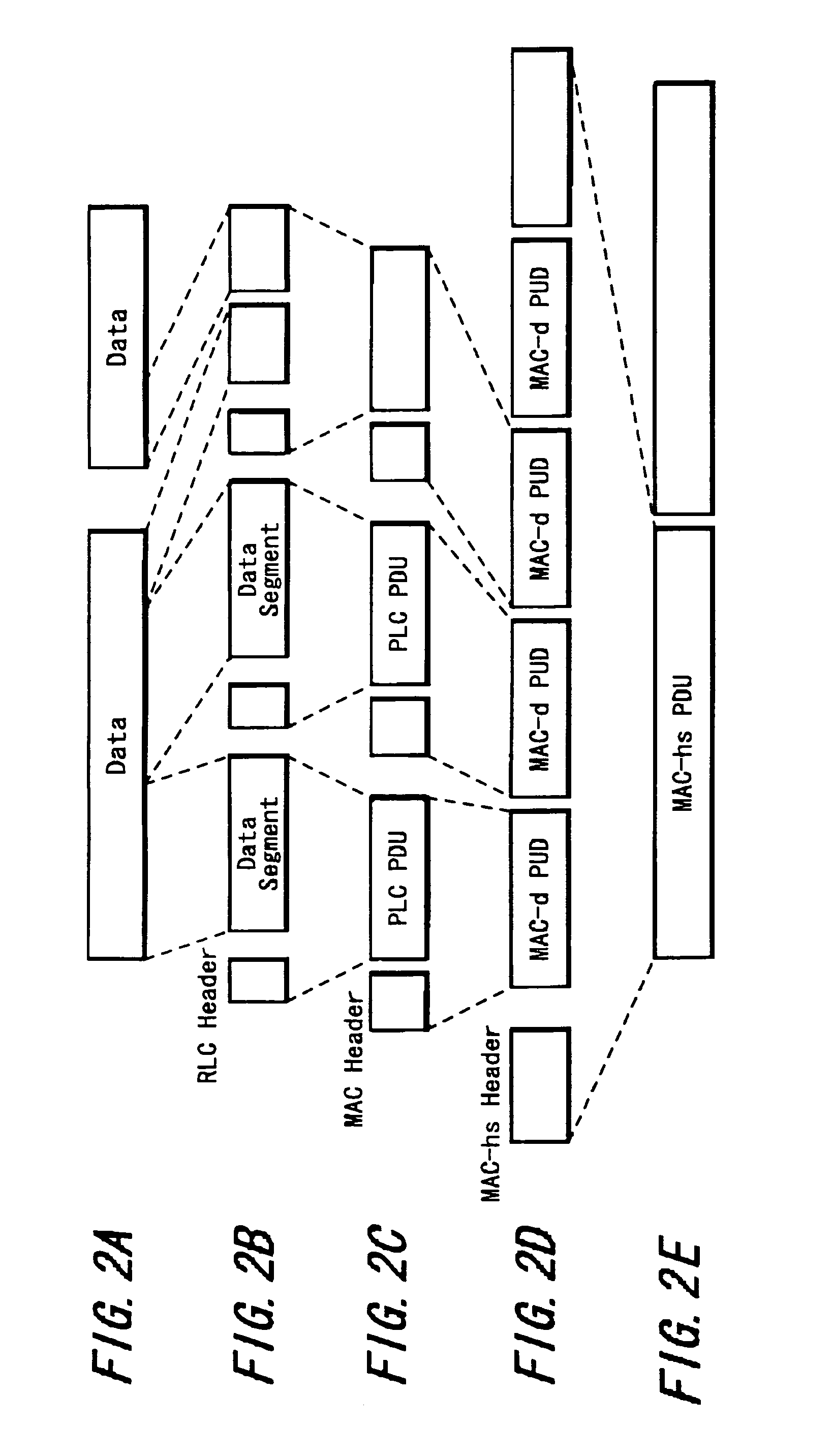Data transmission method and data transmission apparatus
a data transmission apparatus and data transmission technology, applied in data switching networks, instruments, frequency-division multiplexes, etc., can solve problems such as the inability to discriminate nack data at the base station, the data transmission error normally occurs, and the vicious circle, so as to reduce the window size, prevent the degradation of data transmission efficiency, and reduce the amount of data accumulated in the buffer of the rcl layer
- Summary
- Abstract
- Description
- Claims
- Application Information
AI Technical Summary
Benefits of technology
Problems solved by technology
Method used
Image
Examples
Embodiment Construction
[0044]Hereinafter, an embodiment of the invention is explained, referring to FIGS. 4 through 7.
[0045]In this example, a configuration is explained in which HARQ (Hybrid ARQ) is applied to HSDPA (High-Speed Downlink Packet Access) methods.
[0046]HSDPA methods have already been explained in the description of related art, and therefore an explanation is not here repeated. The layer structure shown in FIG. 1 is employed, with a MAC-d layer 2, MAC-c layer 3, and MAC-hs layer 4 existing below the RLC (Radio Link Control) layer 1, and with a transport channel layer 5 existing below the MAC layers 2, 3 and 4, to perform transmission and reception using a physical communication channel. With respect to the protocol data units (PDUs) of each of the layers, the configuration of FIG. 2, previously explained, is also employed.
[0047]The HSDPA method is employed in a system in which high-speed downlink data transmission is performed from a wireless telephone system base station to mobile phone uni...
PUM
 Login to View More
Login to View More Abstract
Description
Claims
Application Information
 Login to View More
Login to View More - R&D
- Intellectual Property
- Life Sciences
- Materials
- Tech Scout
- Unparalleled Data Quality
- Higher Quality Content
- 60% Fewer Hallucinations
Browse by: Latest US Patents, China's latest patents, Technical Efficacy Thesaurus, Application Domain, Technology Topic, Popular Technical Reports.
© 2025 PatSnap. All rights reserved.Legal|Privacy policy|Modern Slavery Act Transparency Statement|Sitemap|About US| Contact US: help@patsnap.com



